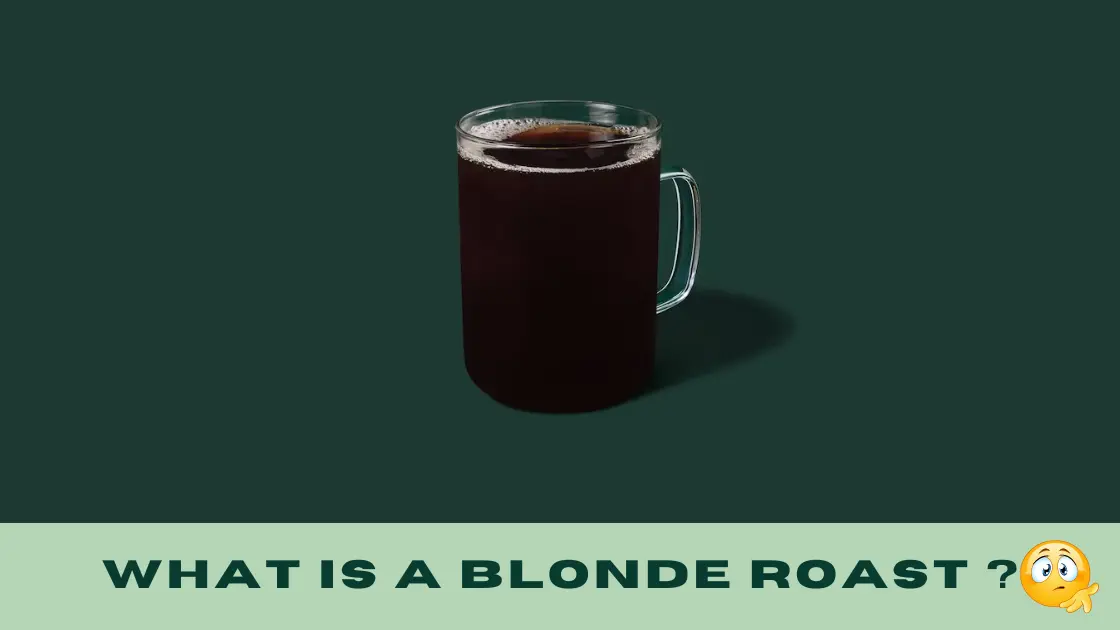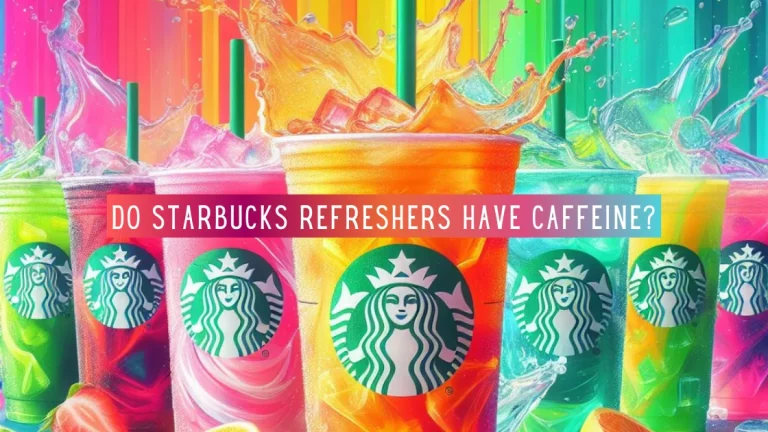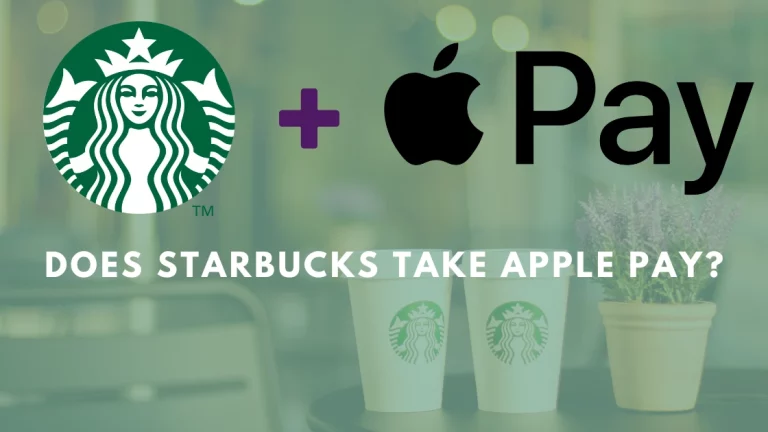As a seasoned coffee drinker or a newbie to the brew, you’ve probably come across the term ‘blonde roast’. It’s a term that’s often misunderstood, and I’m here to dispel the confusion. A blonde roast is essentially a light roast, characterized by a lighter body and higher acidity, often described as the coffee’s brightness.
The world of coffee roasts is a spectrum, with blonde roast falling under the umbrella of lighter roasts. It’s all about the roasting process – roasting at a lower temperature for less time gives us that blonde roast we love. The ‘crack’ is your audible cue that you’ve hit light roast territory. So, let’s dive deeper into the world of blonde roast coffee.
What Is A Starbucks Blonde Roast?
As you continue to investigate the world of coffee, you’ll encounter varying interpretations of classic terms and some new trends like the Starbucks Blonde Roast. This roast has garnered significant attention due to its unique flavor profile and the confusion that sometimes surrounds its definition.
A Brief History Of Blonde Roast
The term ‘Blonde Roast’ initially referred to as a ‘Cinnamon Roast’ due to its light brown color. Starbucks popularized this term when they started marketing their light roast as a blonde roast. It gained this name due to the light color of the roasted beans, although many customers expecting a cinnamon flavor were confused. This misleading interpretation led to a rebranding initiative.
Traditionally, the blonde roast was known as a Half City or New England roast. This shows that blonde roast, in fact, is an ultralight roast, even lighter than the typical light roast.
The confusion flushed the market because there’s no standard definition of a Blonde roast.
The Starbucks Blonde Espresso Roast

One of the most well-known to many consumers is the Starbucks Blonde Espresso roast. Despite the popular perception of blonde roast being an ultralight roast, Starbucks Blonde Espresso leans toward the medium.
To achieve this, coffee beans were slow-roasted at a lower temperature until they reached the first ‘crack.’ The term first ‘crack’ refers to an audible sound heard when the moisture inside the bean turns to steam and erupts. The first crack generally occurs around temperatures of 356 – 401 degrees Fahrenheit.
Starbucks’ Blonde espresso has a more delicate and milder flavor profile. It’s often described as a lively roast having more fruity notes and fewer bitter qualities than a darker roast often provides. Coffee enthusiasts enjoy it because of its bright acidity, floral undertones, and its lighter body. It could be an excellent choice for individuals who don’t appreciate the bitterness of darker roasts.
This roast also makes for an excellent base for coffee drinks like lattes, where flavors like vanilla, chocolate, and caramel come into play. It fits quite well in a mochaccino where the lack of bitterness the coffee offers balances out the cocoa’s native bitterness.
So, next time you visit your favorite coffee shop, why not give the Blonde Espresso a try? You may find it an interesting contrast to your regular order.
What Does a Blonde Roast Taste Like?
As we delve further into the realm of blonde roasts, the first question on your lips might be, “What does a blonde roast taste like?” To answer that, picture a coffee bean that hasn’t seen the inside of a roaster for too long. This paler, ‘blonde’ bean offers a unique flavor profile different from the familiar darker roasts.
A blonde roast is synonymous with bright acidity and a tang of citrus. It might strike your palate as slightly sour initially but soon unveils the subtlety of its unique flavor. It’s like tasting the original essence of the coffee bean, untouched by extended roasting. Some aficionados have even reported a lemony aftertaste, a testament to the inherent citrus notes.
On the flip side, if you’re someone who relishes the sweet, buttery, and caramelized taste offered by beans that have basked in the heat of the roaster for longer, a blonde roast might feel like treading unknown waters. The flavor profile leans towards the crisp, the mild, and the understated. It’s less full-bodied, not as strong as what you’d relish from a French Press or an espresso roast.
Drawing a comparison, a gold roast, mellow in flavor with low acidity, could be likened to a robust tea rather than a traditional coffee. A blonde roast mirrors this approach of subtlety over charred strength, dancing closer to the crevices of the bean’s original flavor, painted with slight tanginess.
But here’s an intriguing fact: Contrary to popular belief, lighter roasts including blonde roasts contain slightly more caffeine than darker roasts. The shorter roasting time retains more of the bean’s caffeine content. Although medium roast still packs a decent caffeine punch, it might be marginally lower than a blonde roast due to a longer roasting duration. However, this difference is usually negligible and does not significantly impact your caffeine intake.
| Roast | Approximate Caffeine Content |
|---|---|
| Blonde | Slightly higher |
| Medium | Moderate |
| Dark | Slightly lower |
Starbucks Blonde Roast
As we delve deeper into the coffee universe, it’s crucial to spotlight one prevalent iteration of the blonde roast – the Starbucks Blonde Roast. This particular roast plays a significant part in making blonde roasts a mainstream choice for coffee lovers.
Nutrition
| Calories 5 | Calories from Fat 0 |
| Total Fat | 0 g |
| Saturated Fat | 0 g |
| Trans Fat | 0 g |
| Cholesterol | 0 mg |
| Sodium | 10 mg / 0% |
| Total Carbohydrates | 0 g |
| Dietary Fiber | 0 g |
| Sugars | 0 g |
| Protein | 1 g |
| Caffeine | 360mg* |
Starbucks Blonde Roast Origins
Deciphering the origin of the Starbucks blonde roast necessitates a trip down memory lane of coffee roasting history. This style of roast was previously known as a Cinnamon roast due to its light brown color.
The term was, however, misleading as it led consumers to expect a cinnamon flavor, which was far from the case. This confusion paved the way for Starbucks to introduce its light roast as a ‘blonde’ roast, offering a brighter, lighter choice for its customers.
The blonde roast, while suggestive of an ultra-light roast, is indeed closest to being a medium roast in Starbucks’ iteration. Its creation involves a ‘low and slow’ roasting process that lasts until the coffee beans reach the ‘first crack’ phase. This phase occurs around temperatures of 356 – 401 Fahrenheit, where the moisture inside the bean converts to steam, releasing an audible crack. Tackling the brewing of the Starbucks Blonde Roast deserves its own spotlight.
Starbucks Blonde Roast Varieties
Despite the unique sizzling history of Starbucks’ Blonde Roast, it retains the bright, fruity, and floral notes characteristic of lighter roasts. Brewed in the right way, a blonde roast coffee can boast a smooth, slightly bitter flavor often described as chocolatey or nutty.
Speaking of tastes, it’s worth noting that the blonde roast’s versatility lends itself to nearly any coffee-based drink. Thanks to its light body and fresh flavors, it can easily be the star of your morning latte, the refreshing sip in your afternoon iced coffee, or the base for a swift shot of espresso.
As the coffee world grows, so does the delightful range of flavors and experiences. Exploration of light roasts, in particular, is far from over. Starbucks, with its introduction of the bold and bright blonde roast, further expanded the spectrum, turning a refreshing page in the coffee anthology.
What Makes Blonde Roast Different?
Before we delve into the unique characteristics of a blonde roast, it’s important to remember that coffee roasting terms can be rather confusing with the many variations like French, Italian, City, Cinnamon, New England, and Vienna, among others. Blonde roast is not an exception and is often seen as a new contender to the roast spectrum. However, it is essentially a rebranding of what was formerly known as a Cinnamon roast.
Taste Profile
The taste of a blonde roast is an interesting debate. Despite its name suggesting an ultralight roast, Starbucks, the most recognized purveyor of blonde roast, actually produces a product that’s closer to a medium roast. This is characterized by a more rounded flavor profile that often retains the bean’s fruity and floral notes. Offering a delightful play between smooth and slightly bitter flavors, the Starbucks Blonde roast is certainly a versatile choice for coffee enthusiasts. It’s important to understand that while other roasters may also offer a blonde roast, their interpretation may differ considerably.
Acidity Levels
Roasting coffee beans low and slow until they reach the first crack, which typically occurs around 356 – 401 degrees Fahrenheit, is a general method used in achieving a blonde espresso roast. As the moisture inside the beans turns to steam and bursts out with an audible crack, the process yields a coffee with a lighter body – often associated with higher acidity. This acidity can deliver a vibrant, tangy quality to the coffee’s aftertaste, a distinguishing feature for some and a potential turn-off for others.
However, the high acidity isn’t a definitive characteristic for all blonde roasts. As confusion continues around the firm definition of a blonde roast, other roasters’ interpretation might also result in different acidity levels.
| Roasting Process | Temperature | Acidity Level |
|---|---|---|
| Blonde, Light, or Cinnamon Roast | 356-401°F | High |
| Medium Roast | 410-428°F | Moderate |
| Dark, French, or Italian Roast | 464-482°F | Low |
As a result of this variation, it’s paramount not to equate the term ‘blonde’ with any single flavor profile or acidity level. Through all the rebranding and restructuring in the coffee world, the Starbucks blonde roast and numerous equivalents from other roasters all contribute to the growth and enrichment of our coffee experiences.
How Is Blonde Roast Made?
Understanding how roasters create this distinct beverage can further reveal the complexities of this light-bodied coffee. Let’s break down the unique process behind a Blonde Roast and the key differences that set it apart from its traditional counterparts.
The Roasting Process
To achieve a Blonde Roast, the roasters perform a low and slow roast until the coffee beans reach what’s known as the “first crack”. This very specific terminology is used to describe the moment when the moisture inside the bean turns into steam and causes the bean to audibly crack. Roasting temperatures typically hover between 356-401°F. This method is all about precision; it demands professional skills that ensure not a moment too early or late is spent in the roasting process.
If we look at the roast color spectrum, a perfected blonde roast is so light that the beans are often yellow. When executed correctly, it gives a vibe of freshness and liveliness to the drink.
Blonde Roast Vs. Other Roasts
Just as the Blonde Roast has its unique identifiers, other roasts have their defining traits. With the variance in roasting processes come subtle changes in the coffee beans’ flavor profiles, body, and acidity.
Medium roast coffees, for instance, are known for their compelling flavor that falls somewhere between light and dark roasts. Descriptions of this roast often allude to a chocolatey or nutty finish, leaning on the more robust side in terms of both flavor and aroma.
Whereas blonde roasts are interpreted by roasters as ultralight and lean towards a fruity or floral flavor. They’re also characterized as having a smooth, slightly bitter taste, contrary to the bitter yet balanced experience a dark roast often delivers.
We must remember, the absence of a defined Blonde Roast standard across the industry leads to incredible diversity. Consequently, roasters across the world interpret it at their discretion, marking blonde roasts as highly subjective and wide-ranging. As mentioned earlier, the Starbucks Blonde Roast, best-known to many coffee lovers, falls closer to a medium roast—proof that “blonde” doesn’t necessarily equate to being the lightest roast available.
In the world of coffee, embracing ambiguity might just lead to the realization that the coffee spectrum is as diverse as one’s palette. This kind of freedom can produce countless possibilities, broadening the coffee lover’s journey, one roast at a time.
Health Benefits Of Drinking Blonde Roast Coffee
Sipping a cup of crisp Blonde Roast coffee not only offers a unique taste experience, but it also provides several health benefits. Let’s look at two of the most significant benefits: antioxidant properties and lower caffeine content.
Antioxidant Properties
Did you know that a cup of Blonde Roast coffee is packed with antioxidants? Yes, you read that right! Lighter roasts such as Blonde Roasts have higher concentrations of chlorogenic acid, a potent antioxidant. It’s these antioxidants that help your body combat harmful substances known as free radicals, which can contribute to chronic diseases like cancer and heart disease. So in a way, drinking Blonde Roast coffee helps keep your body in top shape. Now how’s that for a morning pick-me-up?
Lower Caffeine Content
If you’re concerned about your caffeine intake, Blonde Roasts could be the perfect choice for you. Just like other light roasts, Blonde Roasts have slightly less caffeine than medium or dark roasts. While the difference isn’t substantial, it’s worth noting if you’re keeping a tab on your caffeine consumption. Remember, everything in moderation! You get to enjoy the unique, light-bodied flavor of Blonde Roast, all while keeping your caffeine in check. Talk about a win-win situation!
It’s safe to say Blonde Roast coffee serves up more than a cup of delightful brew. It plays well as a health-conscious choice for those who appreciate the delightful complexity light roasts have to offer.
How To Brew The Perfect Blonde Roast Coffee
Moving on to the practical side of things, once you’ve selected your preferred Blonde Roast coffee, knowing how to properly brew it is key to unlocking its full range of flavors. Brewing Blonde Roast might be slightly different compared to darker roasts due to its unique characteristics but don’t worry, we’ve got you covered.
Brewing Methods
When it comes to brewing methods, I typically recommend pour over or French press. The pour-over method brings out the subtle flavors and the high notes of Blonde Roast, maintaining its light-body and intricate flavors. On the other hand, the French press method allows more oils and a fuller body to be extracted, adding depth to the taste profile.
Remember, water temperature is crucial. For Blonde Roast, I suggest a temperature of around 200°F. Going too far above this could result in over-extraction, leading to a bitter taste, while too cool and you may not extract enough flavor.
Coffee To Water Ratio
Determining the perfect coffee-to-water ratio can take some experimentation depending on the brewing method and personal taste, but a good starting point for Blonde Roast is 1:16 coffee to water. This means for every gram of coffee, you’ll use 16 grams of water. This maintains a balance between flavor, acidity, and body in the finished brew.
Also important to note, Blonde Roast has a higher density due to the beans being less roasted. This means they may yield slightly less volume compared to darker roasts of the same weight. A digital scale can be a very handy tool in ensuring consistently delicious results.
Each cup of Blonde Roast tells a story imprinted by the cultivation, region, and roast level. Understanding these nuances and taking the time to perfect your brewing process can significantly enhance your coffee experience.
Blonde Roast Alternatives
When stepping into the world of coffee, you’ll find a multitude of roast types to explore aside from the Blonde roast. Each brings its unique flavor profile, allowing for new and exciting coffee experiences.
Lighter Roast Options
Light roasts, often named as Half City or New England roast, are a popular alternative to Blonde roasts. Now, don’t get confused with the term ‘New England’ or ‘Half-City’ expecting these roasts to taste differently, they’re just another name used for light coffee roasts. In a light roast, the beans are roasted until they reach the first crack or around a temperature of 356 to 401 degrees. This “first crack” releases moisture from the bean and results in an audible crack, a clear sign that the roasting process is well underway.
These light roasts are also known for their higher density which has led some to interpret “blonde” as being an ultra-light roast. The subtler flavors that come out with a lighter roast can be highly desirable, with fruity notes, floral undertones, and a bright acidity forming a delicate and pleasing flavor profile.
On the other hand, due to the lack of firm definition, many roasters interpret ‘Blonde’ as a color which suggests an ultra-light roast—one lighter than your normal light roast.
Other Coffee Drinks At Starbucks
Although ‘Blonde’ roast is often associated with Starbucks due to their marketing efforts, it’s worth noting that they offer a wide range of other coffee drinks which are not to be overlooked. For those who prefer a stronger, darker flavor, Starbucks offers a medium roast. When brewing medium roast coffee, one can follow a ratio of 18 grams of coffee to 240 ml water. Furthermore, brewing is best achieved with water temperatures between 195 and 205 degrees Fahrenheit, just like brewing a Blonde roast.
Then there’s the ‘Blonde Espresso’. However, it’s rather a misnomer as Starbucks’ Blonde espresso is made with lightly roasted beans that lean closer to a medium roast. This tends to result in a milder and more composed flavor profile with light-bodied fruity undertones and bright acidity, which some may find preferable.
Tips For Ordering Blonde Roast From Starbucks
I’ve shed light on the intriguing world of Blonde Roast coffee. It’s not just another ultra-light roast. It’s a unique blend with a delicate balance of fruity notes and bright acidity. If you’re yearning for a similar taste, consider Half City or New England roast. They’re light roasts with a similar flavor profile.
Remember, Starbucks offers other fantastic options. Their medium roast is worth a try and the Blonde Espresso, a lightly roasted bean, is a game-changer for those seeking a milder taste. So, next time you’re at Starbucks, don’t shy away from trying these alternatives. You might just find your new favorite cup of joe!
Frequently Asked Questions
Is blonde roast smoother?
Yes, Blonde roasts have a smoother flavor when compared with darker roasts. They are less bitter but have a higher acidity level which contributes to their unique flavor profile.
What’s the difference between blonde roast and regular?
Blonde roasts differ from regular (medium or dark) roasts in their flavor, acidity, and roast time. Blonde roast beans are roasted for a shorter time, allowing for more mellow flavors and higher acidity. Regular roast beans possess a deeper, richer flavor profile due to their longer roast time.
Is blonde roast coffee healthier?
Blonde roasts, being a light roast coffee, are rich in healthy antioxidants and polyphenols. However, they are also higher in acrylamide, a potentially harmful chemical. Therefore, both light and dark roasts have their respective health benefits and drawbacks.
Is blonde roast coffee lighter?
Indeed, a blonde roast refers to a type of light roast coffee. It is not as dark as other blends because it is not roasted as long, making it denser in comparison to dark roasts.
What does blonde roast mean?
Blonde roast refers to a light roast coffee characterized by its light-bodied profile and higher acidity levels. The spectrum of lighter roasts includes names like white, gold, and blonde, all indicating varieties of light roast coffee.






